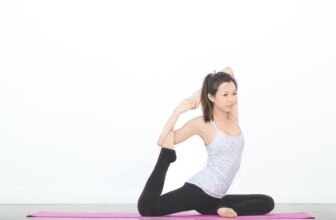Finding Your Center: Effective Grounding Techniques to Enhance Mindfulness and Reduce Anxiety
Introduction
In today's fast-paced world, many individuals face overwhelming feelings of anxiety and stress. Grounding techniques have become essential strategies for managing these emotions, enhancing mindfulness, and fostering emotional resilience. This comprehensive guide will explore a variety of effective grounding methods, their psychological basis, and practical applications. We will delve into various sections, including real-life case studies, a Q&A segment, and a resource table, to create a holistic picture of grounding techniques.
1. Understanding Grounding Techniques
Grounding techniques are coping strategies designed to help individuals focus on the present moment, reducing feelings of anxiety and increasing emotional stability. When anxiety ascends, it can lead to a state where individuals feel disconnected from themselves, their surroundings, and their emotions. Grounding techniques help to re-establish that connection.
2. Types of Grounding Techniques
Grounding techniques can be categorized into several forms:
- Physical Grounding: Engaging the senses to reconnect with the body.
- Mindfulness Techniques: Practices that enhance awareness and presence.
- Mental Grounding: Techniques that focus on engaging the mind to divert attention from distressing thoughts.
- Emotional Grounding: Strategies aimed at soothing emotional turmoil through self-compassion and regulation.
3. The Psychological Basis of Grounding
Grounding techniques are rooted in various psychological theories, including cognitive-behavioral therapy (CBT) and mindfulness. Studies suggest that these techniques can reduce anxiety by:
- Engaging the parasympathetic nervous system, promoting relaxation.
- Providing a sense of stability during emotional distress.
- Assisting in the modulation of negative thinking patterns.
4. Practical Grounding Techniques
4.1 Physical Grounding Techniques
Physical grounding techniques aim to connect individuals with their bodies and immediate physical environment. Here are some effective methods:
- 5-4-3-2-1 Technique: Identify 5 things you can see, 4 things you can touch, 3 things you can hear, 2 things you can smell, and 1 thing you can taste.
- Body Scan: Close your eyes and mentally scan your body, focusing on how each part feels from head to toe.
- Grounding Object: Carry a small object (e.g., stone) to hold when feelings of anxiety arise.
4.2 Mindfulness Techniques
Mindfulness practices focus on being present and reducing rumination:
- Mindful Breathing: Pay attention to your breath, noticing its natural rhythm.
- Meditation: Practice sitting quietly, observing thoughts without judgment.
- Yoga: Engaging in yoga promotes physical and mental awareness.
4.3 Mental Grounding Techniques
This category includes cognitive strategies for managing distress:
- Counting Backwards: Count down from 100 (or any number), focusing solely on the task.
- Positive Affirmations: Reaffirm positive beliefs about yourself aloud or in writing.
- Visualization: Visualize a calming scene or experience.
4.4 Emotional Grounding Techniques
These techniques foster emotional regulation:
- Journaling: Write about your feelings to process and understand them better.
- Practicing Self-Compassion: Treat yourself with kindness, particularly during moments of emotional pain.
- Developing a Coping Plan: Create a personalized strategy that includes grounding techniques, self-care activities, and support systems.
5. Real-Life Examples and Case Studies
To illustrate the effectiveness of grounding techniques, consider the following cases:
5.1 Case Study: Sarah
Sarah, a 28-year-old marketing professional, experienced recurrent anxiety attacks. After working with a therapist, she began using the 5-4-3-2-1 grounding technique. Each time she felt overwhelmed, she would take a moment to identify her surroundings, which significantly decreased her anxiety levels. Over time, she implemented more techniques, including mindful breathing and journaling, leading to improved emotional regulation.
5.2 Case Study: John
John, a 40-year-old teacher, found himself struggling with anxiety due to work-related stress. He began practicing yoga and discovered that it not only helped him feel more grounded during stressful moments but also offered a form of mindfulness. Incorporating yoga into his routine reduced his anxiety and increased his presence in daily interactions.
6. Q&A Section
Q1: How often should I practice grounding techniques?
A: There is no specific frequency; however, practicing grounding techniques daily can be beneficial. Start with a few techniques that resonate with you and integrate them into your routine.
Q2: Are these techniques suitable for everyone?
A: Grounding techniques are generally safe for most individuals. However, those with specific mental health conditions should consult mental health professionals for guidance.
Q3: Can grounding techniques replace therapy?
A: Grounding techniques are valuable tools for managing anxiety but do not replace professional therapy when needed. They can complement therapeutic approaches.
Q4: When should I use grounding techniques?
A: Use grounding techniques whenever you feel anxious, overwhelmed, or need to reconnect with the present moment. They can be incorporated into daily life as preventive measures.
Q5: Do grounding techniques also benefit physical health?
A: Grounding techniques primarily focus on mental and emotional well-being; however, by reducing stress and anxiety, they can consequently have positive effects on physical health as well.
7. Resources
| Source | Description | Link |
|---|---|---|
| Mental Health America | A nonprofit organization providing information and resources on mental health. | mhanational.org |
| Mindful.org | A comprehensive resource on mindfulness practices and research. | mindful.org |
| American Psychological Association (APA) | A professional association that provides numerous articles on anxiety and mindfulness. | apa.org |
| National Institute of Mental Health | Government resources, including information on anxiety disorders. | nimh.nih.gov |
| Headspace | A mindfulness and meditation app to practice grounding techniques. | headspace.com |
8. Future Trends and Areas for Further Study
The growing interest in mindfulness, combined with its relevance to mental health, suggests future trends may include:
- Integration of technology in mindfulness practices (e.g., apps, VR experiences).
- Increased research on the effectiveness of grounding techniques in various populations.
- More focus on the connection between grounding techniques and physical health outcomes.
Conclusion
Grounding techniques are invaluable tools for enhancing mindfulness and reducing anxiety. By reconnecting with the present moment, individuals are better equipped to manage emotional challenges and cultivate a sense of peace. Future exploration into the science behind these techniques can further validate their usage and provide insights into best practices. Everyone's experience with anxiety is unique, but the collective study of grounding techniques holds promise for improving mental well-being across diverse populations.
Disclaimer: The information provided in this article is for educational purposes only and is not intended as medical advice. Please consult with a qualified healthcare provider for individual guidance and support related to mental health and wellness.










